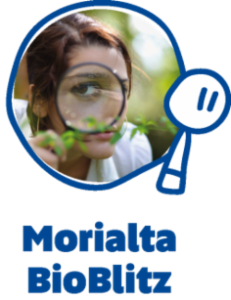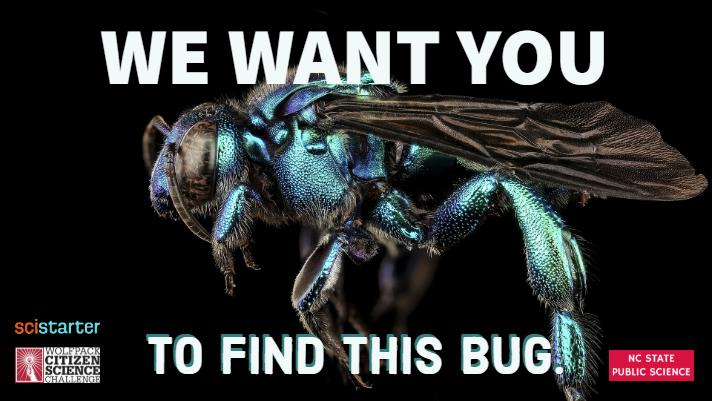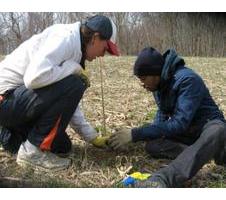Search for rkid_genus group%3Aurn%3Alsid%3Abiodiversity.org.au%3Aafd.taxon%3Aa38442cb-d0ce-4fe2-8e44-a596e093bf6f returned 669 results.
Refine results
Refine results
Section
- Site Page (332)
- Biodiversity Science project (178)
- Data provider (85)
- Data resource (32)
- Support article (30)
- Institution (11)
- Spatial layer (1)
-
Biodiversity Science project: Jenolan Caves Bioblitz
The K2W Jenolan Caves BioBlitz 2018 is a two-day, free community event involving a series of wildlife and habitat surveys, undertaken at various sites around Jenolan Karst Conservation Reserve...

-
Biodiversity Science project: Brisbane’s Big Butterfly Count
What a great opportunity for Brisbane. The universally loved butterflies are ideal to promote biodiversity protection. For <i>Brisbane Catchments Network</i> (BCN) and its member groups, this will be the first fauna group to be assessed on a citywide basis and may well be followed by others. Brisbane's Big Butterfly Count is multi-layered. More information can be found on BCN's website. Here BCN encourages participation in a <b>Popular Count</b> limited to 31 common and easily recognisable...

-
Biodiversity Science project: Sharks and Rays of Ningaloo
A Western Australian organisation collecting sightings of sharks and rays in the Ningaloo Reef/Exmouth Gulf Region to record baselines of biodiversity and distribution. We welcome submissions from fishermen, divers, beach goers, surfers etc and require simple details of the sighting eg. Date, Location, photo. Submissions can be anonymous and details of location can be kept confidential...

-
Biodiversity Science project: Morialta BioBlitz 2015
Scientists and naturalists conduct biological surveys and take members of the public along to help collect, observe, record and learn. BioBlitz events are hands-on, scientific fun, designed around making discoveries, sharing talents, and igniting the interests of participants. How will the Morialta BioBlitz run? The BioBlitz will run over two days. The first day is a Friday, with the daytime activities reserved for school classes...

-
Biodiversity Science project: Never Home Alone @ NCSU
For this project, which is open to anyone that lives on or near the NC State campus, participants will be finding and photographing the insects and other life that they find in their homes, dorms and apartments. They will upload their findings to a public database through the iNaturalist mobile app...

-
Biodiversity Science project: Nebraska Master Naturalist Program
The Nebraska Master Naturalist Program is a volunteer program designed to train participants to conduct scientific research, conservation education, outreach, and service in their communities. Volunteers learn about Nebraska’s ecosystems and biodiversity, acquire new skills, and network with others who share a passion for the conservation of natural resources...

-
Biodiversity Science project: BiodiversiTREE
BiodiversiTREE is an experimental forest on the campus of the Smithsonian Environmental Research Center in Edgewater, MD. In fall of 2013, staff and volunteers planted more than 20,000 trees in 75 plots. Some of the plots have one species, some have 4 species, and others have 12 species...
-
Biodiversity Science project: Great Victorian Koala Count 2015
Victoria and South Australia have large and thriving Koala populations, unlike Queensland, New South Wales and the Australian Capital Territory where Koala populations are in decline and are listed as vulnerable under the Environment Protection and Biodiversity Conservation Act 1999. In most areas of Victoria, Koala densities are naturally low (on average about one per hectare)...

-
Support article: How does the ALA integrate data?
Integrating or aggregating data is the process of bringing multiple, disparate data sets together and combining them into a single data structure. Combining and standardising the different data sets allows them to be searched as a single unit using common terms. The ALA brings together hundreds of data sets and makes them available through a common interface...
-
Support article: Sharing data with the ALA
Once you have started collecting data with BioCollect, you can choose to share your data with the ALA. To turn on data sharing, email support@ala.org.au. Once data sharing is turned on for your project, all occurrence records in your project will be sent to the ALA. If your data is embargoed, it will not appear in the ALA. The licence you select in your survey configuration will be attached to all data from the survey...
